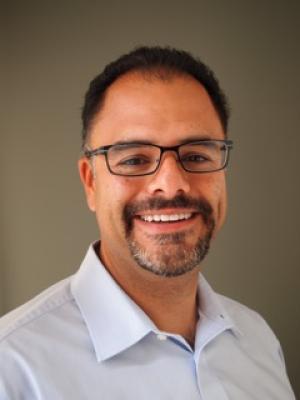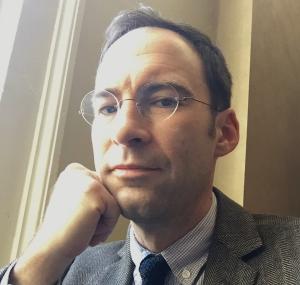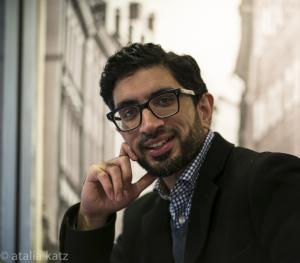Resources

In two classes that I teach—“Islam” and “The Qur’an”—I often assign the film Wadjda (dir. Haifaa Al-Mansour, 2012) as the first homework assignment. Wadjda tells the tale of a young girl (same name as the film’s title) in Saudi Arabia who longs to own a bicycle, despite cultural norms that allow them only for boys. Her story takes place before a backdrop of a Muslim society, institutional corruption at her all-girls school, her parent’s crumbling marriage, and a male-dominated world. Most importantly, even for the uninitiated, I find that the film is plenty relatable to American college students. Wadjda, the protagonist, is an adorable, clever, and perseverant young girl and it’s easy to become engrossed in her story. I give students a pair of questions to consider as they watch the film, which we spend time exploring in the following class meeting: 1) In what ways does Wadjda challenge stereotypes (yours or American society’s more broadly) about Islam; 2) In what ways does Wadjda confirm stereotypes about Islam? These questions are straightforward, but I find that they work well because they set a tone that invites students to share their experiences, without risking right or wrong answers at the very beginning of the semester. The questions additionally push students to reflect on the complex choices and characters in the film as well as on their own complexity as agents in the world. Naturally, American students enter a course on Islam with any number of sensational ideas about Muslims. Western cinema, moreover, often presents Muslim characters as nothing more than bloodthirsty villains or quaint Orientalized simpletons (or both), which Jack Shaheen adroitly explores in Reel Bad Arabs (both the title of a monograph and documentary film). Indeed Wadjda could well be the first film college students ever see that portrays Muslims as something other than caricatures. By and large students like the film, but I do struggle with how to make the plot sound more intriguing when I tell students about it on the first day of class (i.e., it’s about a girl who wants a bike?); trailers are helpful. Because Wadjda features primarily female characters, it pushes Western viewers all the more, given the naïve ideas many of us have not only about Muslims in general but about Muslim women in particular. The context of the film also offers much for reflection. It’s the first feature film directed by a Saudi woman. It has received acclaim across many venues, including “Rotten Tomatoes” and the New York Times, which refers to the film as “sweetly subversive.” It was also nominated as best foreign language film for the Academy Awards and adapted in 2015 as an English-language novel. Despite all the benefits from assigning the film, I find that subtitles tend to invite a minority of students to complain, as the labor of viewing while reading taints their experience with the film. While I appreciate this as a consumer—plainly, subtitles can create more work for the film viewer, who often prefers a more passive than active experience—I think it also symbolizes a valuable struggle when encountering new cultures and new ideas. Additionally, unless the viewer knows to interpret a small clue (a shirt with KSA on it), or previously learned the context for the film, it’s actually not even completely clear where the film takes place. Throughout the film, Wadjda’s aloof father explores the possibility of a second marriage, while her mother struggles to provide for her family and create a good life for her only child. Like many good films, the characters in Wadjda are complex and believable. Wadjda argues with authority figures and listens to Western music but also lives innocently in her own challenging world of early adolescence. Toward the goal of acquiring her prized bicycle, Wadjda learns to negotiate a few under the table deals with members from her community (e.g., delivering secret messages between sweethearts), but her primary strategy to earn money involves entering herself in a Qur’an recitation competition. She practices with dedication and her hard work shows. Students won’t usually catch a certain subtlety at this part of the film, but the verses recited in the competition (including their translations in subtitles) speak to many of the themes in the film—thus this scene on its own could work well pedagogically in a number of contexts. While the film resolves the question of acquiring the bike (with an endearing twist), the overall ending leaves Wadjda’s future open to interpretation. I think it leaves a key question for my students: How can Wadjda and other females in the film demonstrate such agency and complexity if Muslim women are supposed to be oppressed? Even though this question presupposes a monolith of “Muslim women,” I think that the first part of the question, which acknowledges complexity and nuance, works well to emphasize one of the main themes of my courses: you can’t study religion without also studying people. Indeed, a required visit to a local mosque is among the most memorable aspects of my course for many students, so starting the semester with a drama helps set the stage for thinking about humanly complicated interactions with our course topic. What makes the film so effective, though, is that it’s not just a central question that the film raises. It touches effectively on so many themes, subtly and explicitly, central to what I want my students to engage throughout the course: gender, Islamophobic stereotypes, “religion” vs. “spirituality,” public vs. private religion, multivalent characters, polygamy, and non-English languages. Islam functions subtly in the film, moreover, which works well pedagogically for communicating how religion often works in people’s lives—as an integrated but still striking aspect of culture and society, in relationship to the lives of individuals, with unique stories and experiences. I’ve introduced other courses I’ve taught, as well, with feature films, and in this way, I think my approach with Wadjda is largely transferable as a model to begin a course. I would like to argue, as well, that it’s a strategy that could do well to receive more attention. After all, how important is the “hook” in any rhetorical expression? I’m of course not arguing that films are necessarily the best hook to capture students’ attention—I think this is largely a matter of taste—but I wonder to what extent that opening a course with a feature film is often overlooked because it doesn’t fit into the typical paradigm of how a college course is supposed to begin. Indeed, how is a college course supposed to begin? Do you use films to frame your courses? What kinds of questions best help your students to make sense of their themes? Have you screened Wadjda for your students? Please leave your thoughts in the comments section below!

In my last two blogs, I have been sharing some thoughts on teaching Sufism and contemporary Sufism, giving special consideration to the importance of helping students actively explore different elements of Sufi tradition and culture in the different Islamic periods. For this blog, I would like to point out opportunities to teach about Islamic arts from Sufi perspectives in order to provide a taste of Sufism’s impact on Islamic cultures and societies. Focusing on the arts allows the student to learn that Sufis frequently sought more artistic means of expression, including poetry, architecture, music, and calligraphy, in order to transcend the conventional language of theology and philosophy which too often fails to prove an adequate means of communicating higher truths. From Sufi perspectives, the arts embody metaphysical principles in visual and auditory forms, communicating these principles with an immediacy difficult if not impossible to achieve within the discursive confines of prose. Additionally, the arts have further functioned as a means to express the simultaneous unity and diversity of Islamic civilizations, as they communicate principles shared by all Muslims, and yet these principles are expressed through diverse cultural themes and motifs, illustrating the confounding array of cultural forms found within Islam. The profound influence of Sufi poetry, whether it be in Persian, Arabic, Somali, Urdu, or Turkish to name a few languages, is essential to discuss with students. For many Sufis (e.g., Rumi, Ibn al-Farid, al-Hallaj) poetry was the peak of eloquence and culture for expressing the vicissitudes of human life. By evoking perennial realities such as death, time, and change, poetry brings us into contact with our own existential limitations. In particular, by exploring the poetic works of different Sufi personalities, the student becomes familiar with a variety of Sufi themes, principles, practices and experiences. Studying Sufi poetry and the many poetic techniques (metaphorical language, rhythmical patterns, etc.) then helps the student to understand Sufi symbolism and the idea that the Sufi poet was endowed with the ability to penetrate the veil of appearances in order to depict the essential character of the image being portrayed. In other words, poetry becomes a vehicle to decipher the signs of the Divine. Architecture is also another artistic tradition that can help students consider how the sacred principles of Sufism took material form in structure, with the shrines of saints and Sufi lodges as well as mosques. These architectural wonders would define the great Islamic cities, while also leaving imprints on the surrounding, expansive countrysides. Students appreciate exploring how these structures were carefully constructed utilizing sacred geometrical principles, symbolic forms and ornamentation, color theory, and sacred calligraphy. Ultimately, many of these structures were created to communicate higher realities and Sufi cosmologies. These sites within the built environment were also the places where one of Sufism’s most iconic artistic forms took shape, the various sorts of chant and music developed by different Sufi orders. Each order would develop its own liturgy of chant, with particular formulas, breathing techniques, musical accompaniment, and even dance, reflecting the particular lineage and ethos of the order. By focusing on the significance of architecture, students learn that Sufi shrines and lodges and mosques of Muslim societies were pivotal sites around which Muslim culture revolved and evolved, where dervishes and sultans, devotees and those seeking healing, all came to participate in the presence of the sacred atmosphere they encountered at these sites. In many cases structures built for trade and residence would radiate outward from centrally located sacred spaces, visually representing the concept of the qutb, the Muslim saint who watches over a particular region. Shrines and lodges integrated local cultural architectural forms, making African and Asian as well as Arab and Persian architectural styles (to name just a few) integral parts of Islamic architecture more broadly. Finally, exploring the world of Quranic calligraphy and its influence on Sufism also helps students appreciate some very abstract metaphysical understandings. For many Sufis this practice of writing the sacred word took on added levels of significance, encouraging them to play a very active role in the development of Quranic calligraphy. They experienced calligraphy as an attempt to communicate spiritual truths and realities. In their pursuit of calligraphy, Sufis emulated the broader norm within Islamic culture to give deep respect to the capacity of the written word to convey revealed truths. They regarded Quranic calligraphy as a holy art that offers baraka (blessing) to the recipient of its beauty and wisdom. They contemplated not just the divine words and chapters in themselves, but also the Arabic letters as constituent elements of divine speech. The practice of calligraphy thereby became integrated with other methods of Sufi practice and included reflection on sacred and symbolic qualities of Quranic words. When sharing the significance of Sufism and the arts, it is important to emphasize how this deeply aesthetic orientation of Islamic culture is rooted in the Qur’an itself, which expressed ethical and metaphysical principles with rhythm and rhyme. This divine beautification of the word would be emulated by Muslims, for whom the word was central to artistic expression. The Quranic word then was beautified aurally in recitation, and visually in architecture, calligraphy, and crafts. This beautiful expression of the word further functioned to inspire divine remembrance, as the linguistic signs of God surrounded Muslim daily living. For many Sufis then any artistic expression, like poetry, architecture, and calligraphy, was a contemplative discipline, the practice of which was a form of dhikr, the art of remembering the Divine. 1. ‘I believe in the religion of love’ This calligraphic piece by Hassan Massoudy is a saying by Ibn al-‘Arabi from his book of poetry, Interpreter of Desires: ‘I believe in the religion of love, wherever its stages may go, love is my religion and faith.’ Hassan Massoudy, a native of Najef, Iraq, is a world-renowned master of contemporary Arabic calligraphy whose works bring light to a variety of classical Sufi personalities and their well-known sayings. To see more of Hassan Massoudy’s artwork visit http://www.massoudy.net. 2. Darou Khoudoss in Touba, Senegal Darou Khoudoss, “the Abode of the Holy,” is a mosque that was built in the place where Ahmadu Bamba, leader of the Muridiya Sufi order, experienced spiritual retreats and received mystical visions. This photo was taken by Dr. Eric Ross. For more about Ross’ research see https://ericrossacademic.wordpress.com/. 3. Sema A watercolor painting in the Shirazi style (c. 1582) depicting a sema. This picture is notable in that four women and a child are part of the Sufi circle, suggesting their initiation into the practices of the order. Source credit: https://the.ismaili/ismaili/fr/london-exhibition-provides-insight-life-and-legacy-prominent-persian-ruler

After teaching an introductory course on Islam for over ten years I still am fascinated that most students are unaware of what Sufism is and how Sufism has influenced Islamic metaphysics, societies, cultures, histories, arts, sciences, and trade. In addition to asking myself “Why is there such a lack of knowledge about Islam and Muslim societies?” I have also often asked myself, “Why is there such a disconnect in the minds of students when it comes to Sufism and Islam?” For this current blog and the two that will follow in the Autumn months, I will share some thoughts about teaching Sufism and contemporary Sufism. As readers of the Teaching Islam blog can attest, teaching and writing are interconnected. Many of us write books and articles to use as tools for our classes. Just this past summer, I completed with my co-author, Dr. William Rory Dickson, an introductory textbook on Sufism entitled Unveiling Sufism: From Manhattan to Mecca (available next year through Equinox Publishers). I also am currently writing with my co-authors Dr. William Rory Dickson and Dr. Merin Shobhana Xavier a manuscript entitled Contemporary Sufism: Piety, Politics, and Popular Culture (available next year through Routledge Publishers). The structure, approach and content of these books have influenced my teaching on Sufism, and my experiences in the classroom have influenced my writing. When teaching on Sufism, I find it helpful to “meet students where they are” with Islam, which means starting with the here and now. One way of doing this is to utilize a genealogical framework, in which the student begins to learn not with the historical past, but with the contemporary present: with the diversity of living Sufism in North America today, and ways in which Sufis feel pressure from “both sides” – from non-Muslims and Muslims alike, albeit for different reasons. Taking this approach enables the teacher to explore the growing anti-Muslim, post-9/11 sentiment among North Americans, as well as the intensification of anti-Sufi sentiments among some Muslims (explaining, for example, why Muslim extremists are destroying Sufi shrines). Students then can also examine the different interpretive tendencies emerging among Sufi communities in North America, including universalist tendencies that understand Sufism as something not limited to Islam, as well as more traditionalist perspectives that assert Sufism’s necessary connection to Islamic practices and laws. In addition, the students can learn Sufism’s remarkable influence on North American art and culture, notably through the 13th century Sufi personality, Jalal al-Din Rumi, whose poetry has inspired a variety of different tributes and interpretive expressions, in visual art, yoga, social activism, dance, music, and even in the restaurant and café business. By beginning with issues and themes found in the 21st and 20th centuries, students are then offered the complexities of Sufism as we collectively move deeper through time and space, journeying through a variety of historical, religious, political, and cultural contexts, further delving into the past, and closer to the “origin” of Sufism. This genealogical framework enables the student to understand the patterns of connection between contemporary manifestations of Sufism and past realities from, the bustling metropolis of 21st century Manhattan, to colonial Algeria, through medieval Delhi and Istanbul, back to Baghdad and ultimately Mecca – the birthplace of Islam and its mystical tradition. In addition to using a genealogical framework, it is important to help students explore Sufism as a multidimensional phenomenon. Sufism has influenced Muslim philosophy and metaphysics, but also politics, art, and culture in each historical period. Utilizing particular Sufi figures, movements, places, artistic expressions, or philosophical views, the student develops a richly contextualized appreciation of Sufism. For example, one teaching exercise that I have used is to compare the tradition of wandering mendicants or dervishes of Islam to the leaders of the medieval imperial courts. In such a comparison, I like to share with students the symbolic significance of specific items from material culture. For example, I like to bring to class a very elaborate kashkul from Lahore, Pakistan, as well as miniature paintings of medieval dervishes from Turkey and Iran. Another consideration when teaching on Sufism is to consciously integrate the contributions of women to Sufism, as well as the diversity of Sufism in different regions of the world. In order to avoid reducing the role of women to a subject for one class session, it is important to use women as examples in each historical era, drawing out numerous examples of Sufi women who have been engaged in politics, philosophy, arts, etc. Additionally, it is easy to use illustrations and case studies from the Middle East and South Asia, but it also is essential to help students explore Sufism in all regions of the world, especially Africa and Southeast Asia. There are many different ways to enliven the teaching of Sufism and to make the subject speak to contemporary students who enter the classroom with diverse interests and preconceptions. By engaging current concerns as well as pop culture manifestations of Sufism and then working backward in time toward the point of origin, it is possible to enable new ways of connecting with the subject matter. Such an approach also facilitates the introduction of perennial debates about Islam and Sufism in relation to current controversies, demonstrating continuity as well as change and diversity in Sufism throughout the centuries and opening student’s minds to Islam’s rich and varied cultural, intellectual, and spiritual heritage.

Joshua Canzona Georgetown University When I was teaching public high school, a colleague in the history department approached me to express his concern about our world religions curriculum. “I am scared to touch it,” he said. What he meant, first of all, was that he felt unprepared to teach about..

Nancy Lynne Westfield Associate Professor of Religious Education Drew Theological School It is a challenge to do what you teach. “If you know these things happy are ye if you do them.” (John 13:17, King James Version – or the version of my childhood bible study) - my grandfather’s favorite.

Joshua Canzona Georgetown University In his “Homage to Joe Sacco,” Edward Said celebrates the author of Palestine and gives us one of the best love letters to comics ever written. He shares his first comic book experience, “Everything about the enticing book of colored pictures, but specially its untidy, sprawling.

Edward E. Curtis, IV Millennium Chair of the Liberal Arts & Professor of Religious Studies Indiana University School of Liberal Arts at IUPUI (Indiana University - Purdue University, Indianapolis)For the past fifteen years I have tried to teach about Islam as a religiously diverse tradition practiced by communities around

Caleb Elfenbein Assistant Professor Grinnell College Some time back, I wrote a blog post called “Teaching Islam and gender: why we need to set an ethical agenda for the classroom.” It described how, working collaboratively, my class on Islam, gender, and sexuality drew on the work of Lila Abu-Lughod to..

Martin Nguyen Associate Professor, Faculty Chair for Diversity Fairfield University In the teaching of Islam, there are many ways through which we can engage our students in the classroom. My intention here is to share one assignment that I have developed over the years that has proven to be incredibly.

Youshaa Patel Assistant Professor of Religious Studies Lafayette College My primary objective as a professor is to nurture my students’ ability to think critically. Given the rising tide of Islamophobia and the increasingly acerbic rhetoric targeting Muslims in national political discourses, however, I consider developing their empathy and compassion an.